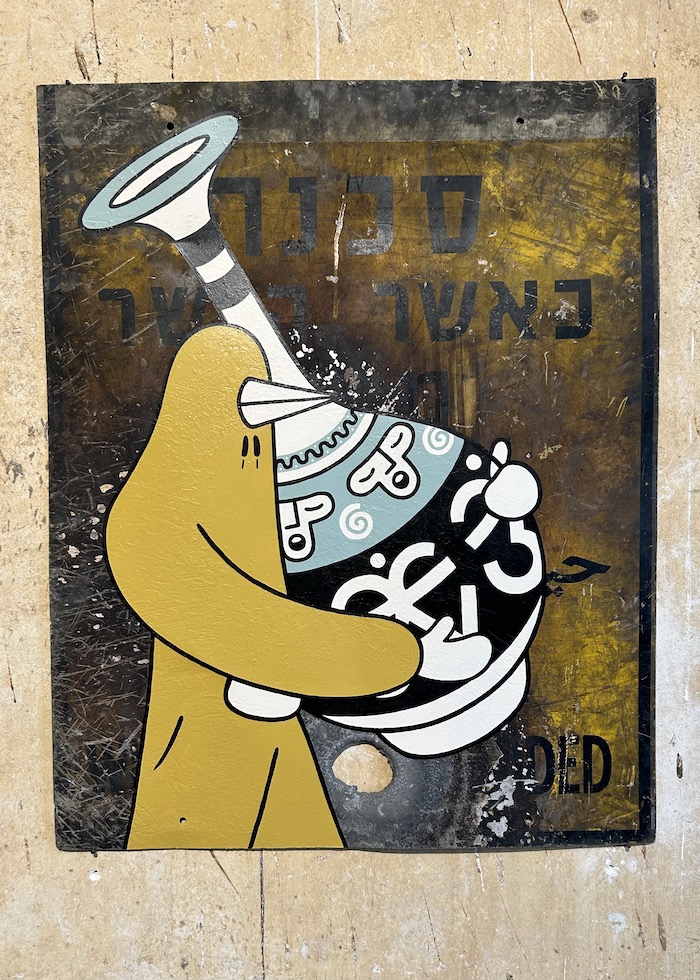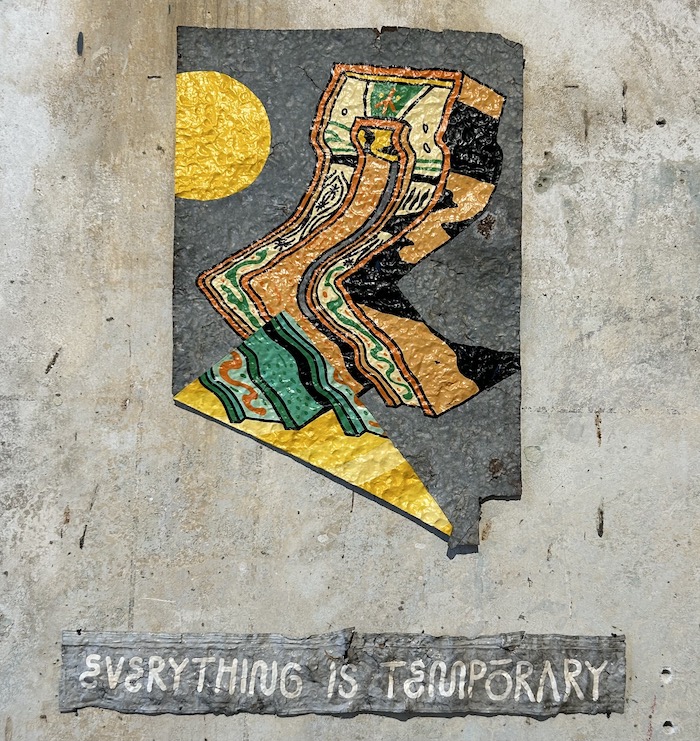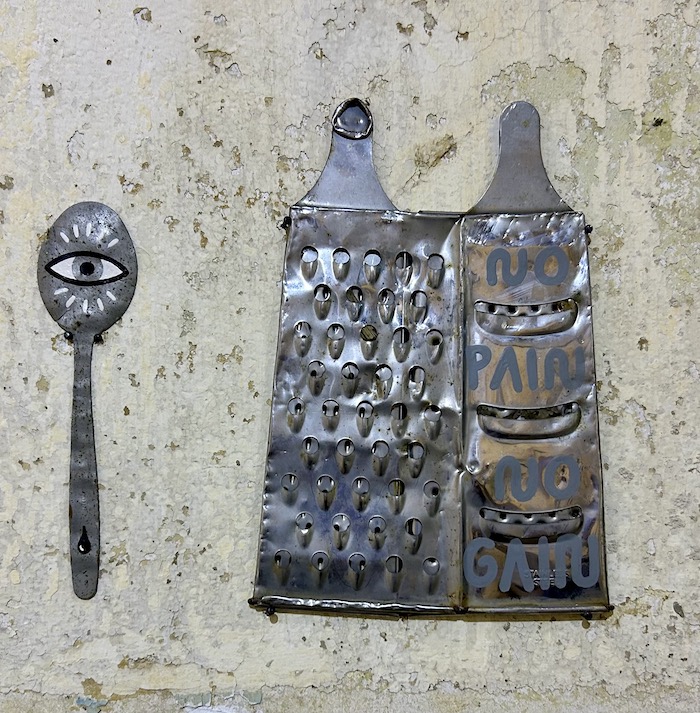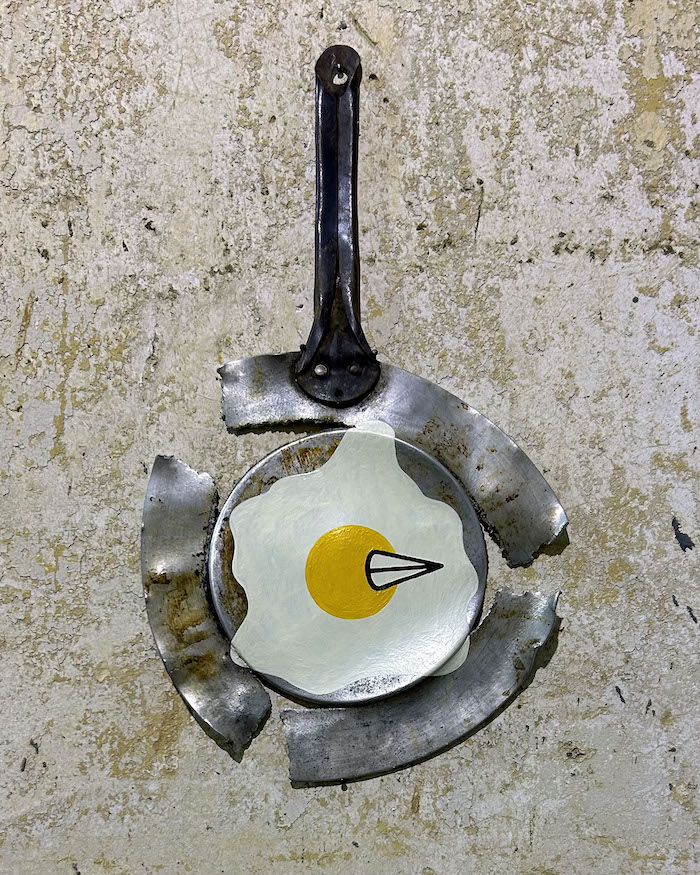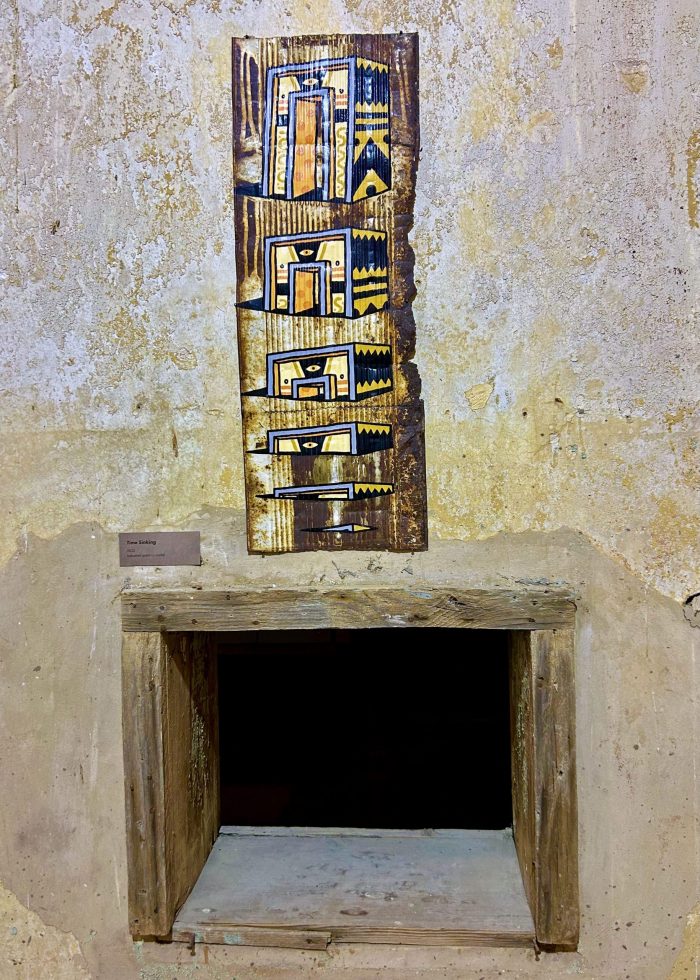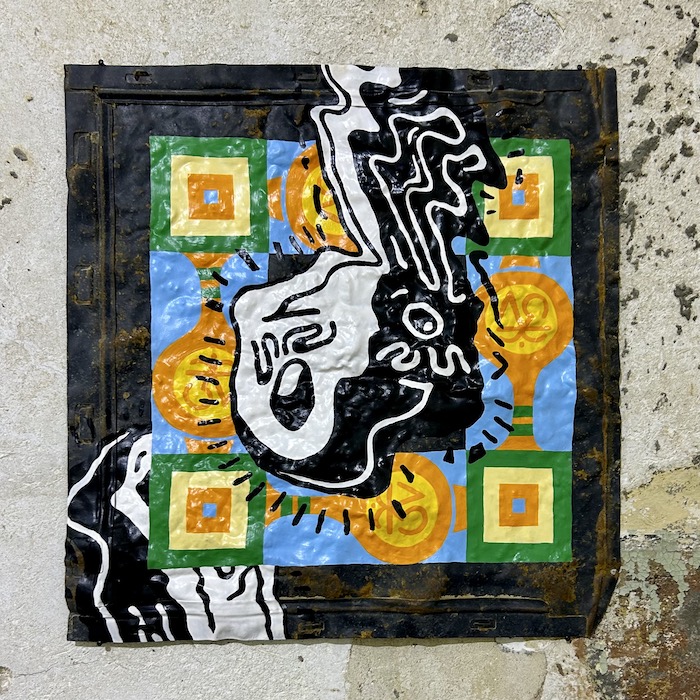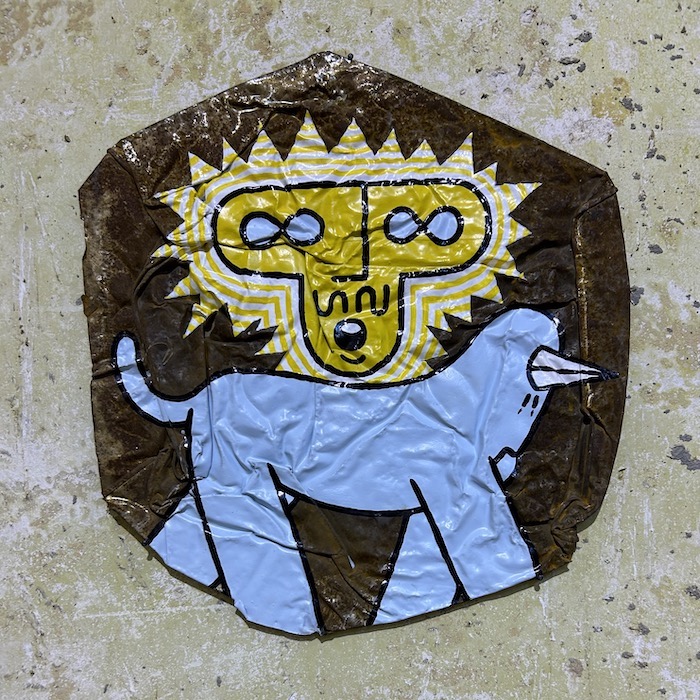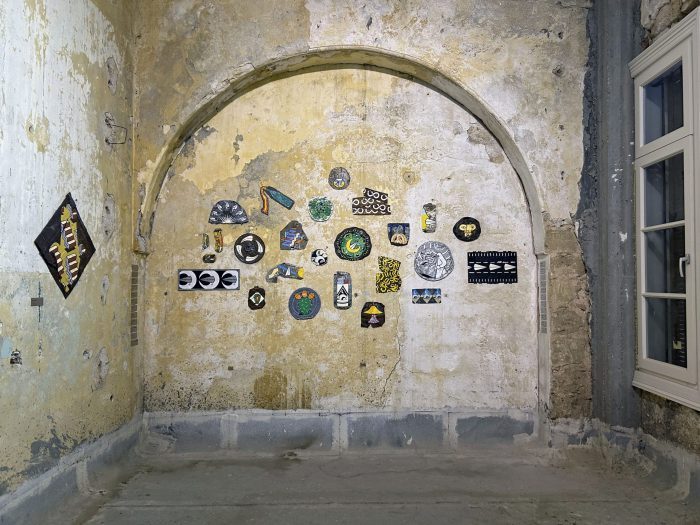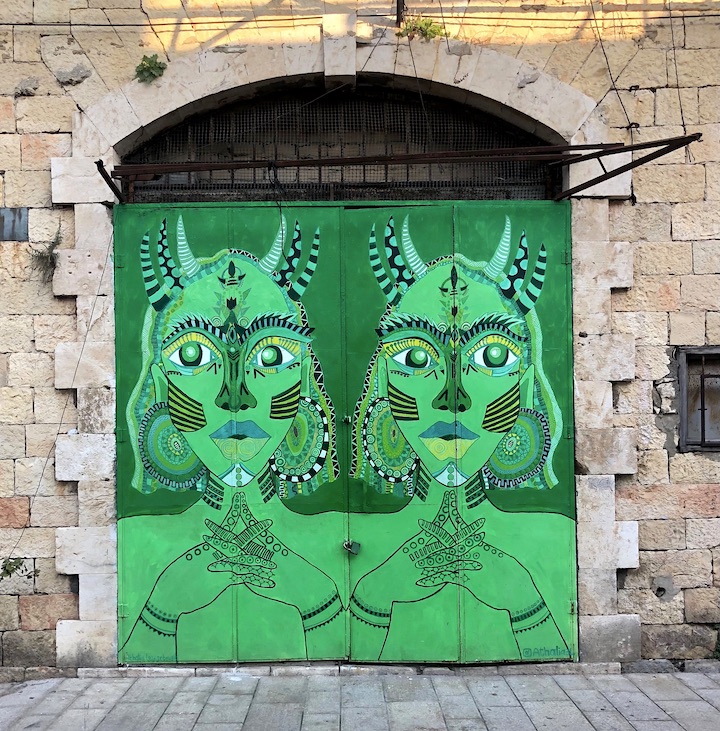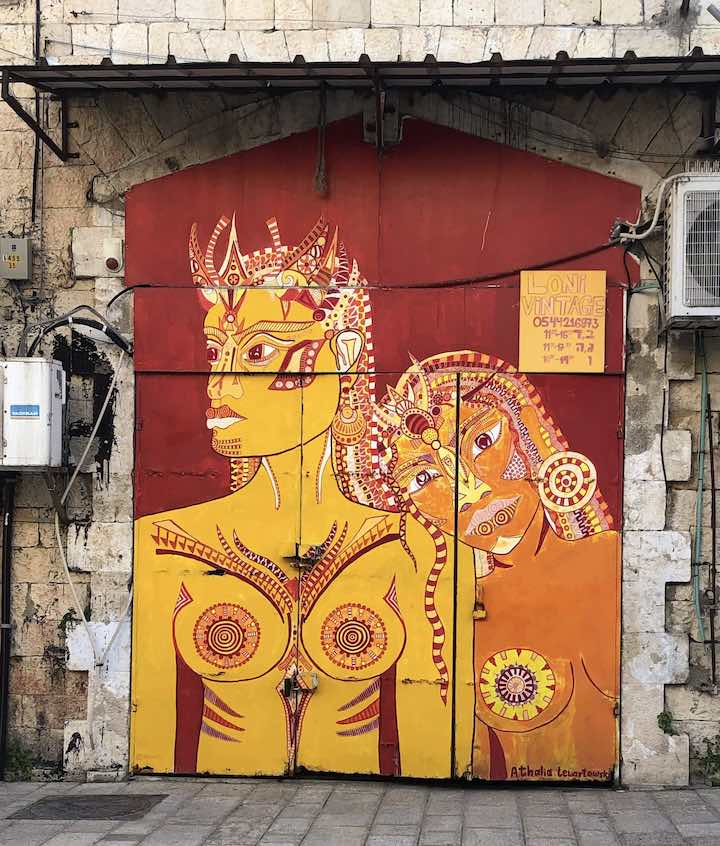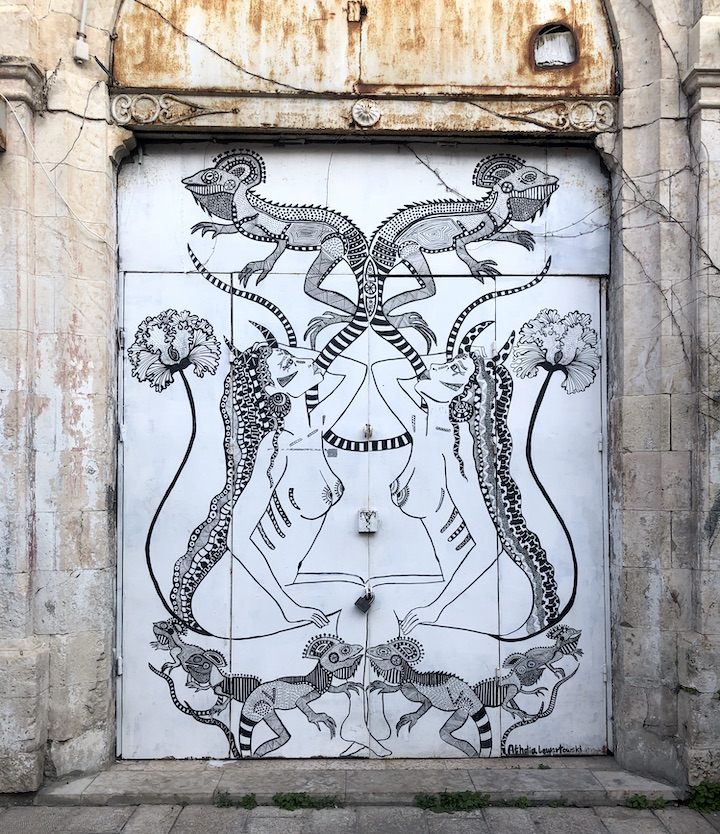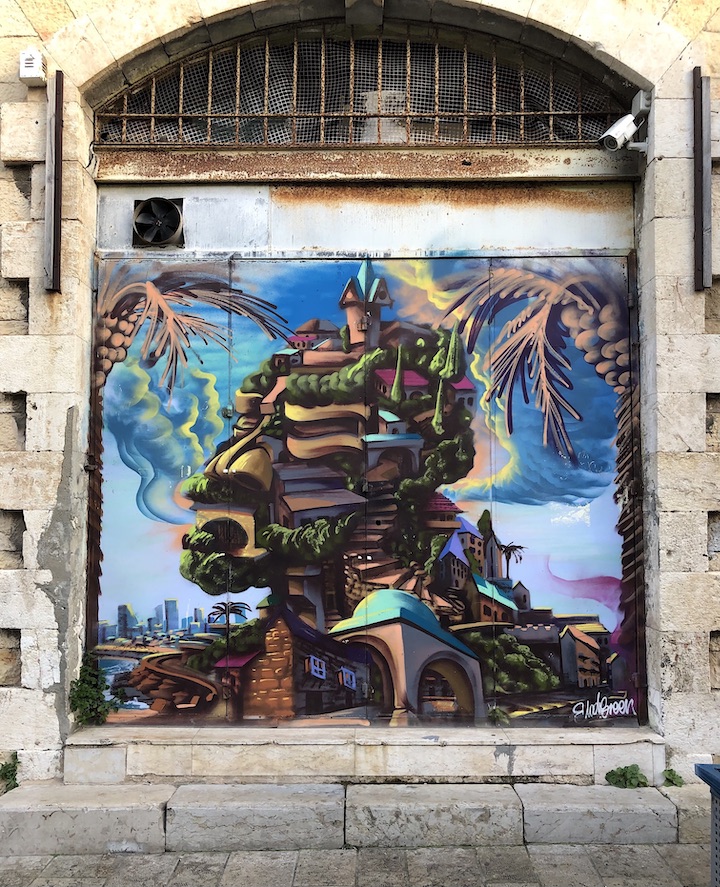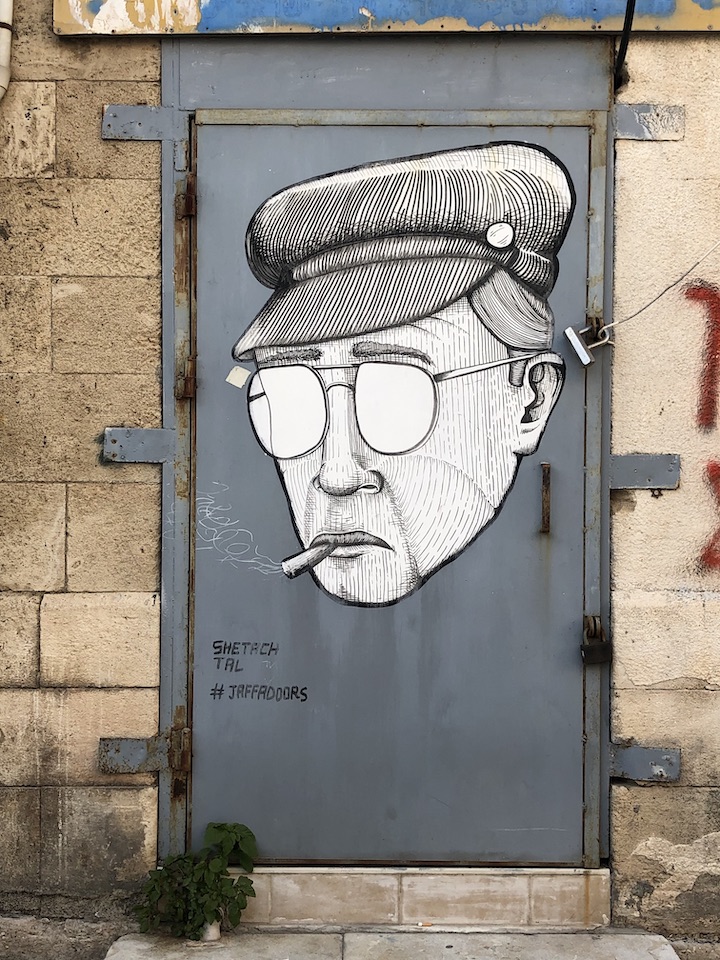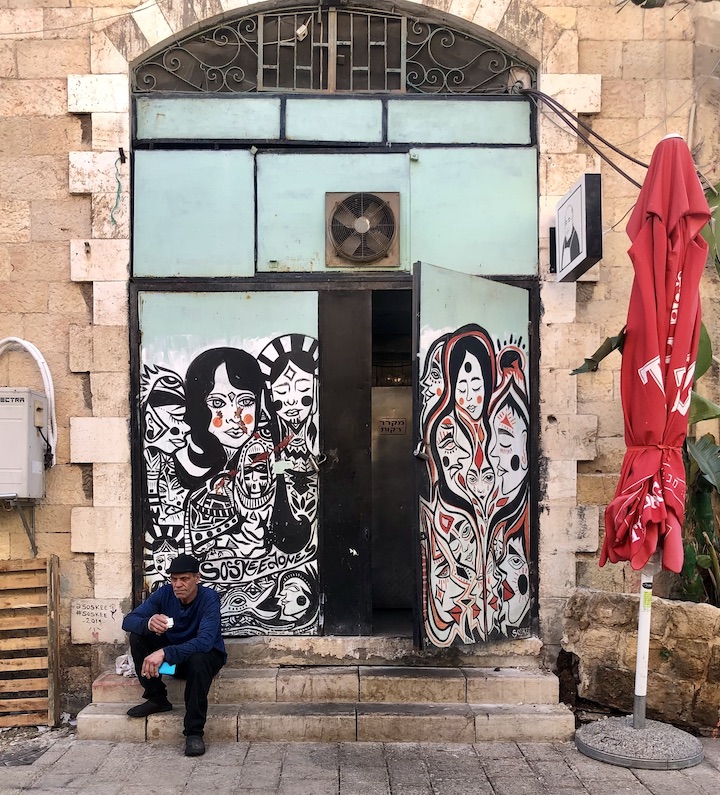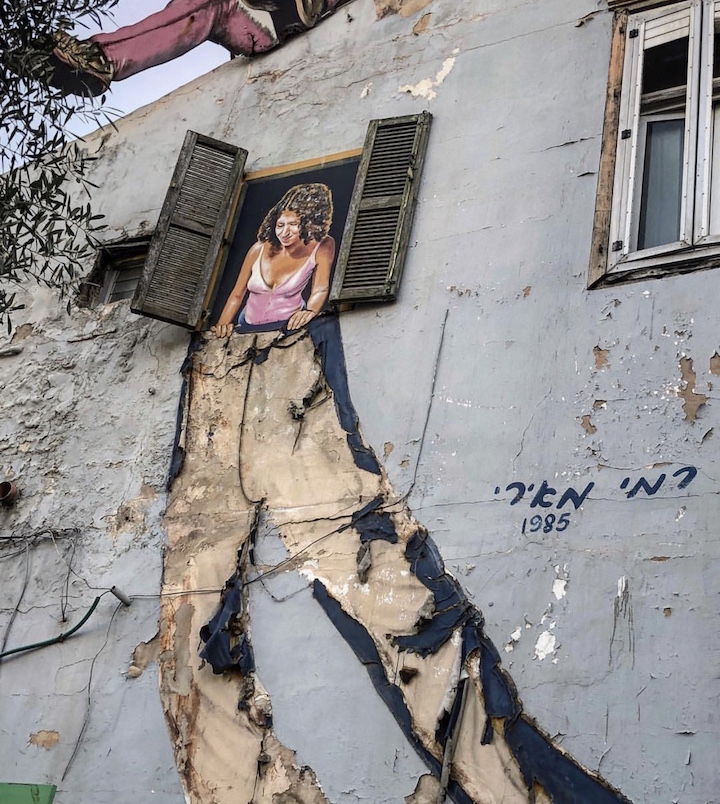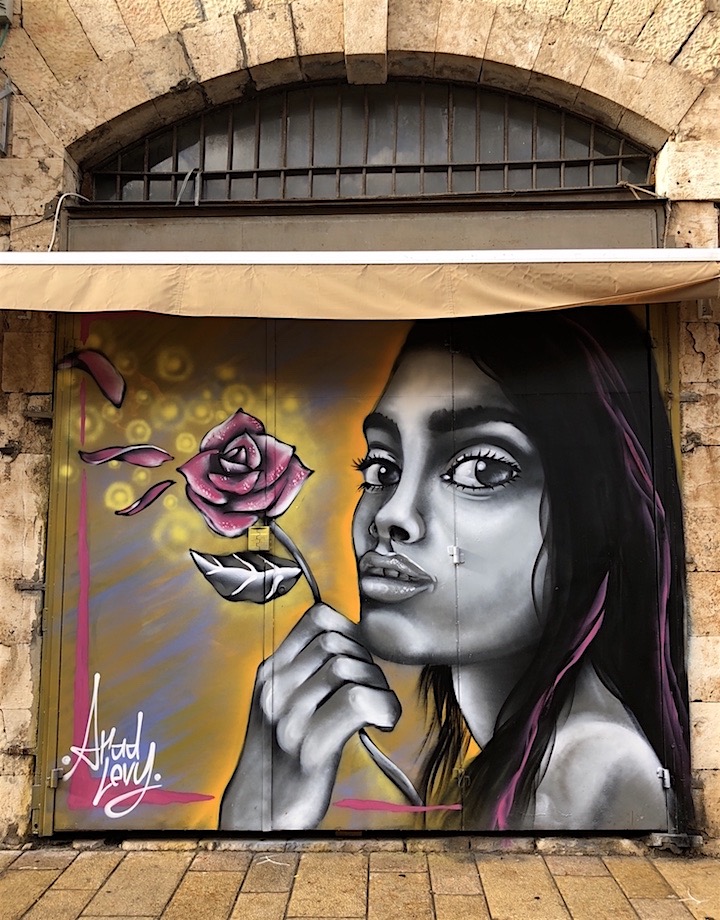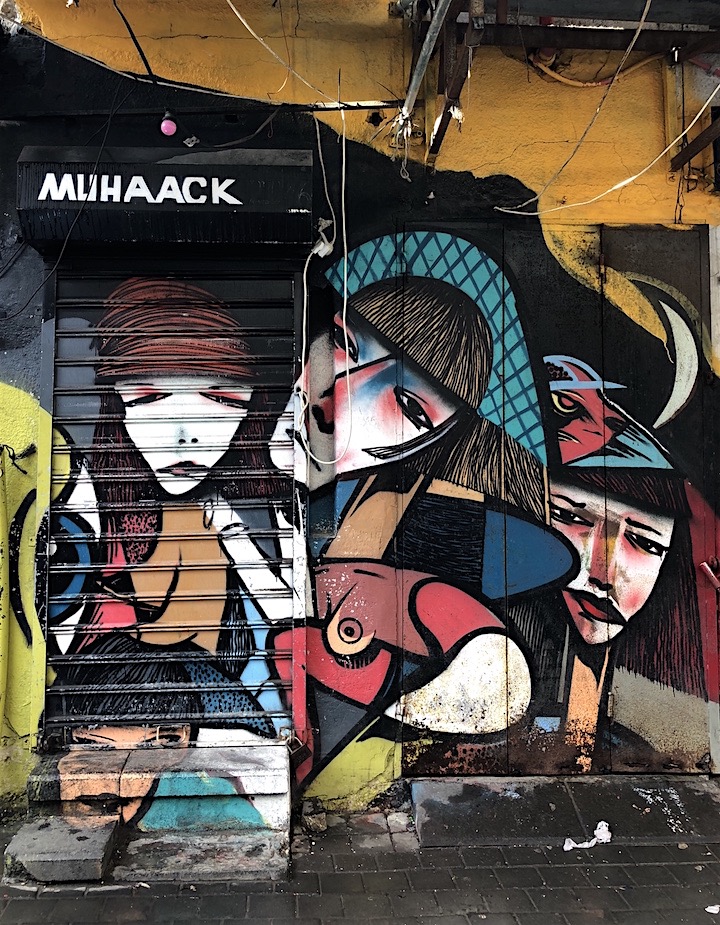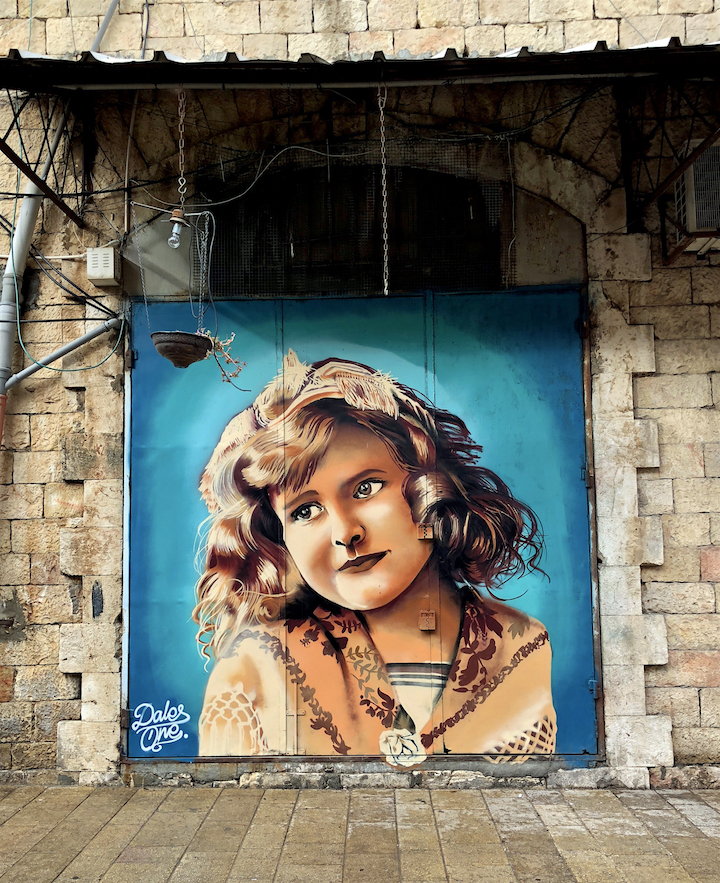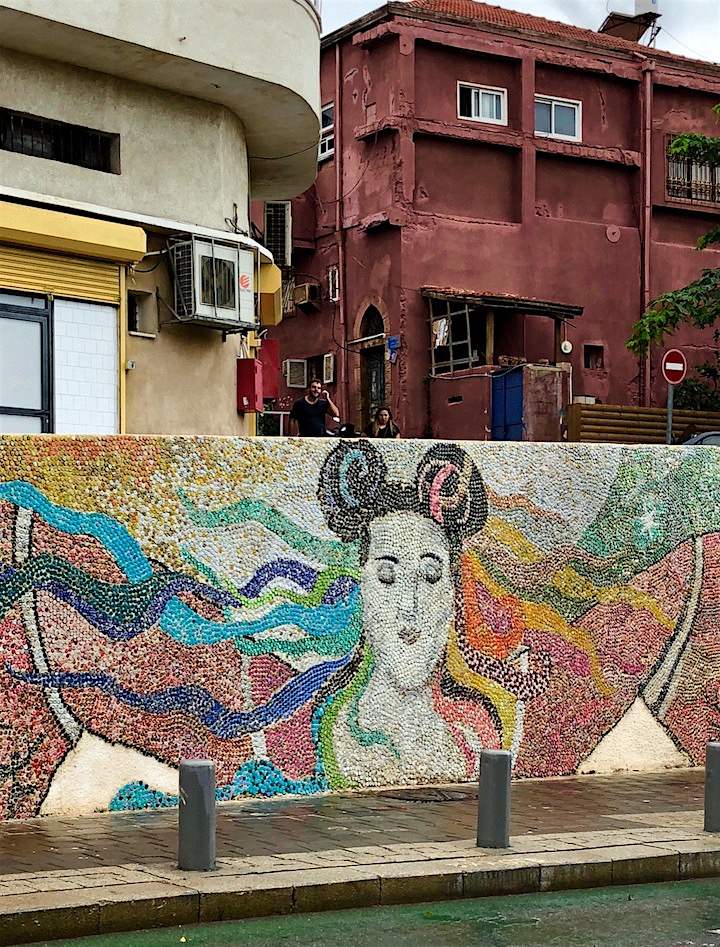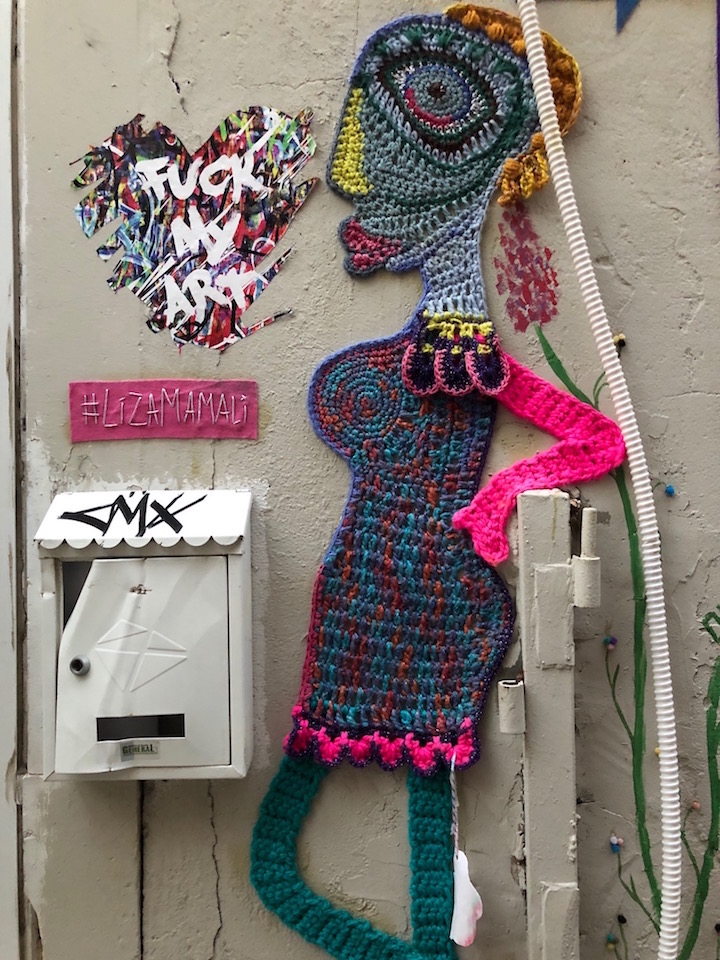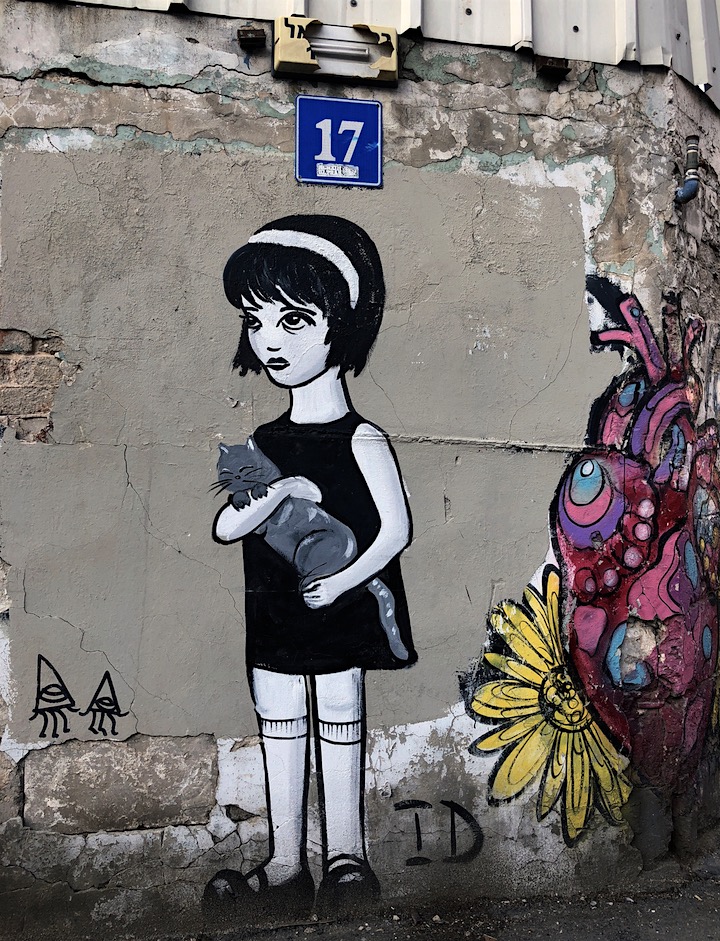Nick Kuszyk‘s impeccably-crafted robots are among NYC’s most seductive images. With their bold colors and expressive movements, they brilliantly enhance our urban landscape. I had the opportunity to speak to their creator, R. Nicholas Kuszyk aka RRobots, shortly before he left for his one-month residency in Jaffa, a seaport town on the outskirts of Tel Aviv.
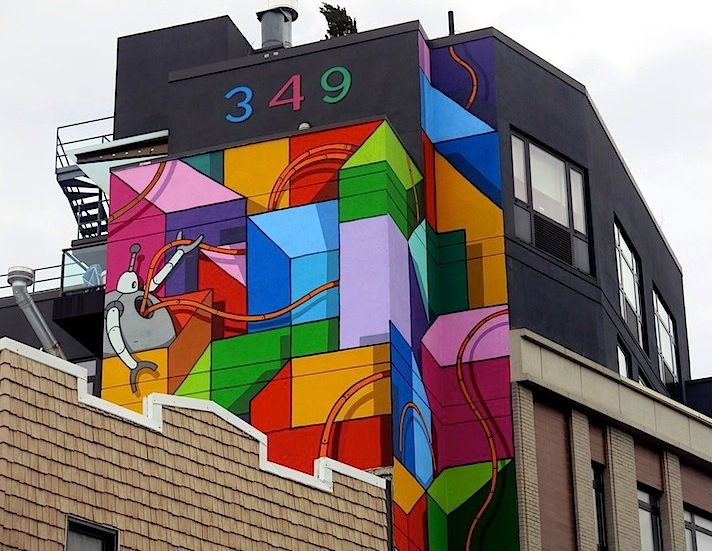
When and where did you first get up?
It was back in 1993 in the suburbs of DC.
Had you any preferred surface or spot back then?
I hit whatever walls and trains I could.
Who or what inspired you at the time?
Cycle and Cool Disco Dan were among my main inspirations.
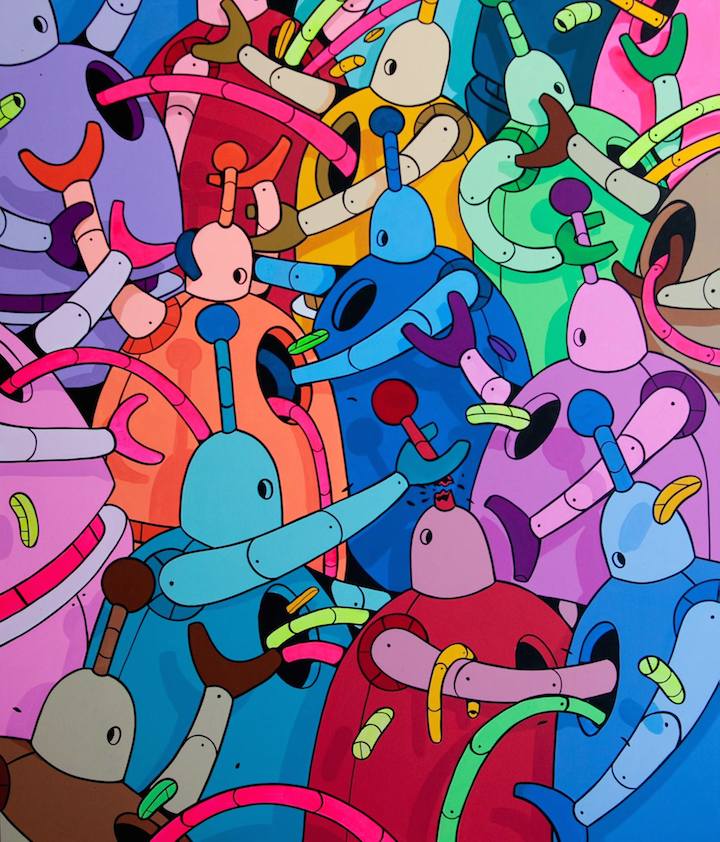
Do any early memories stand out?
My friend’s older brother had a black book and a copy of Videograf. It seemed monumental. I was 12 years old when I discovered another reality.
How did your family feel about what you were doing?
My parents didn’t know what I was doing. But my family has always been supportive of my art. My mom is an interior decorator and my sister does cool drawings.
Were you ever arrested?
No. I never got caught.
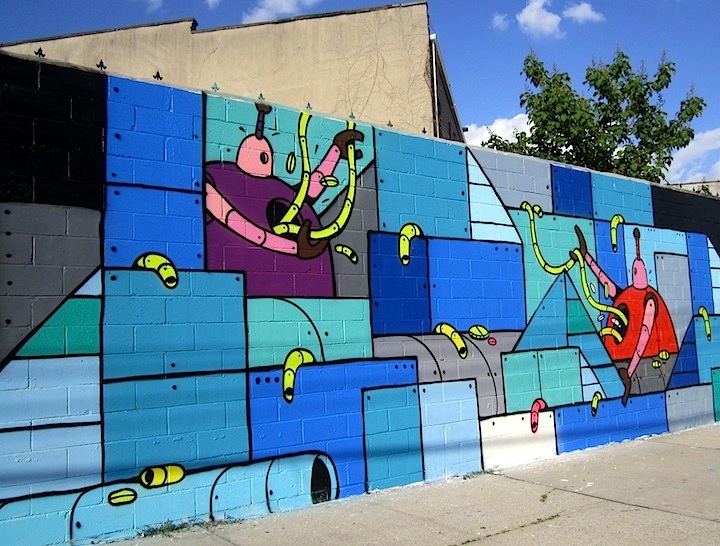
Most of us here identify you with your signature robot. Can you tell us something about it? When was it born?
It was born in 2000, and my first legal robot wall surfaced in 2002 in Richmond. Since then, it has traveled to over a dozen cities in the US and abroad to Berlin, London, Prague and now to Tel Aviv.
Why a robot? What does this robot represent?
I like its simplicity, its universality. It’s up to you to decide what it represents.
How do you feel about the movement of street art and graffiti into galleries?
It’s fine.
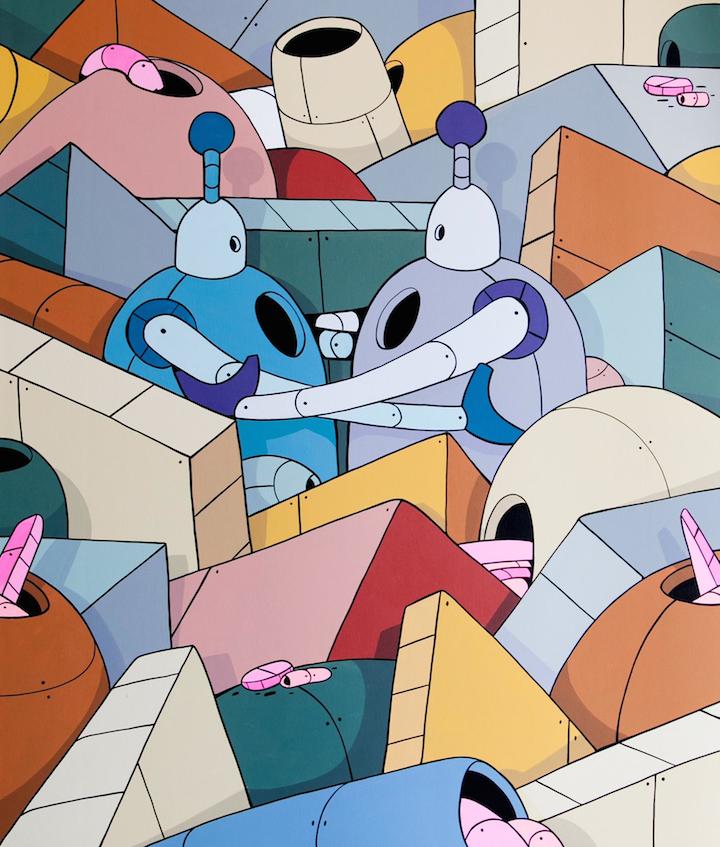
Is there anyone with whom would you like to collaborate?
Satan.
Are there any particular cultures that have influenced your aesthetics?
The skateboarding culture and graffiti.
Do you work with a sketch in hand or do you just let it flow?
I always have a general idea of what I will be painting. But I don’t prepare sketches.
Are you generally satisfied with your work?
It depends.
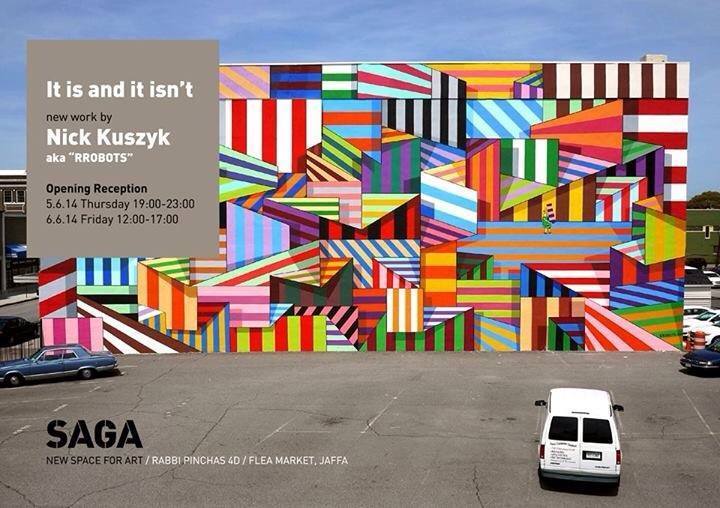
Do you have a formal arts education? Was it worthwhile?
Yes. I studied art at the Virginia Commonwealth University School of the Arts. It was definitely worthwhile, as it widened my perspective.
How has your work evolved in the past few years?
It has become more geometric, and the robots are becoming less central to my pieces and more integrated into them.
How do you see the role of the artist in society?
The artist is here to educate and to entertain. And the street artist has a distinct role – to increase property values.
Note: Nick’s exhibit, consisting of artwork created during his one-month residency, opens tomorrow, Thursday, June 5 at SAGA, a new space for art in Jaffa.
This interview was conducted by Lois Stavsky; photo 1 in Williamsburg, Brooklyn by Lois Stavsky; photo 2, courtesy SAGA; photo 3 at Welling Court in Astoria, Queens by Tara Murray; and photo 4, courtesy SAGA
